Raised Wheat
Patent/design registration not found - name assigned based on external decoration
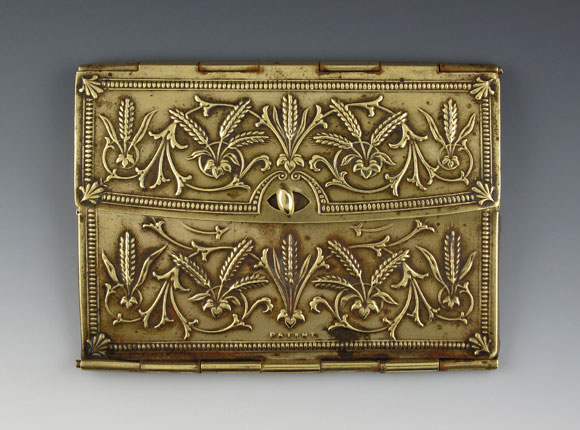
Needle Case
Design Details
Needle Case Type: |
Flat-Names |
Patent/Registered to: |
Unknown |
Patent/Design Representation #: |
Unknown |
Patent/Design Registration Date: |
Unknown |
Location of Patent/Design Registration: |
Unknown |
Reference #: |
Unknown |
Dimensions: |
9.3 x6.9 |
Material: |
Brass |
Name Variations: |
Wm. Hall & Co - Studley |
Other Variations: |
None |
Additional Photographs
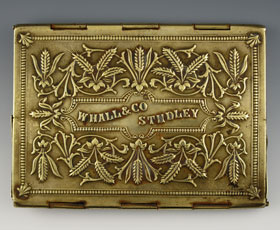

Back and back signature detail
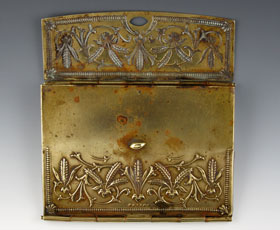
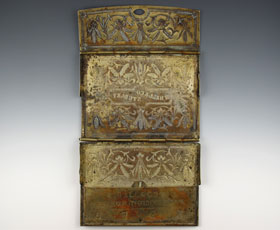
Front parially open and fully open
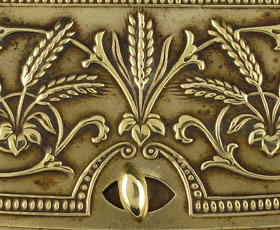
Front clasp detail
Facts
Wheat is a grain originally found in the Middle East. It was one of the first grains to be domesticated leading to the human transition
from hunter gathers to an agricultural based society. Once farmers were able to domesticate plants and animals as a food source other members
of society were free to specialize in other areas. Plant domestication began in the Fertile Crescent around 10,000 BC followed by permanent
settlements which in turn developed into the sophisticated civilizations of the ancient world.

History
Throughout the Victorian period bread was the primary food source for the majority of working class people in the UK. At the start of the
era, in 1837, the flour used to make bread contained a combination of whole grain wheat and barley. When combined with beer, which had
additional vitamins and calories, it was a fairly nutritious meal. However, due to concerns with drunkenness, by the middle of the era beer
was replaced by tea which had little nutritional value. Also by 1901 the way in which flour was processed had changed. During the late
Victorian period roller mills replaced stone mills and the wheat germ that provided much of the nourishment was crushed and sifted out to create
white flour. As a result, although bread was now cheaper, it lacked essential vitamins and minerals. While this loss of nutrition didn’t
have a significant effect on people who had a more varied diet, it did cause significant health problems for those individuals where it was their
main food source.

Miscellaneous
The Post-Impressionist Dutch artist Vincent Van Gogh (1853-1890) lived his entire life during the Victorian period. He did not begin to
paint until his late twenties and many of his most famous works were completed during the last two years of his life. In 1888, after two years
in Paris, Van Gogh moved to the city of Arles, in southern France where he lived until 1889 producing another 300 paintings in addition to the 200
he completed while in Paris. Once in southern France Van Gogh ventured into the neighboring countryside and painted rural landscapes often
focusing on harvests and wheat fields. After suffering from mental illness for years he committed himself to an asylum in Saint Remy in 1890
and died shortly thereafter at age 37 from a gunshot wound believed to be self-inflicted. One of his last paintings was the “Wheatfield with
Crows” see below which captures the sadness and loneliness he felt during his final days. During his lifetime few acknowledged his genius as
an artist and only after his death did the world begin to appreciate the beauty and intensity of his work. Click on the picture below to see
a larger version of it.














